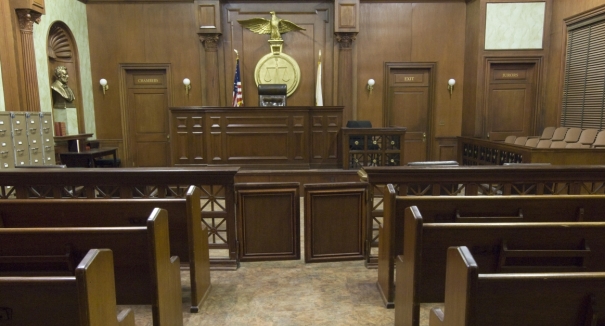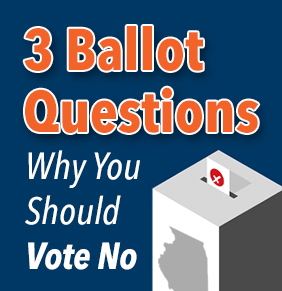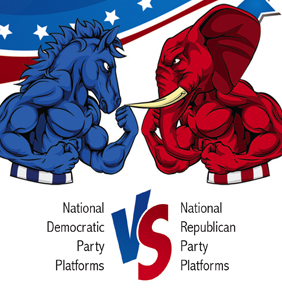In Cook County, Judge-Making is Like Sausage-Making
Written by Russ Stewart
It is often remarked, not facetiously, that squeamish people don’t want to know how sausage is made and intelligent people don’t want to know how judges are made. The “best and the brightest” on the bench? Not a chance.
This article is not about sausage. In Cook County, it’s judge-making time, and it ain’t pretty. On June 25 and 26, at the Democrats’ “pre-slating,” 41 lawyers who are appointed judges appeared and begged and groveled for party slating. There are two 1st District (Cook County) Appellate Court vacancies and 10 countywide Circuit Court vacancies (which may expand to 12 to 15 by the December filing deadline).
The slated candidates will be anointed in late August. That means that 31 lawyers’ egos will be sliced, diced and eviscerated, but who really cares about suffering attorneys? There is no American Society for the Prevention of Cruelty to Lawyers.
There are 387 jurists in Cook County, three on the Supreme Court, 24 on the Appellate Court and 360 on the Circuit Court, of whom 75 are elected countywide and 147 are elected from the county’s 15 subcircuits, while 138 are associate judges appointed by Circuit Court judges. The elected judges stand for retention every 6 years, and they never lose; the associates are subject to reappointment every 4 years. When vacancies occur in either the Appellate Court or the Circuit Court, they are filled by appointment by the three 1st District (Cook County) Supreme Court justices, Anne Burke (the wife of the alderman), Charles Freeman (a Circuit Court judge from 1976 to 1990) and Mary Jane Theis (a Circuit Court judge 1988 to 1993 and an Appellate Court justice from 1993 to 2010). All were slated. All are Democrats. They have a rotation system for appointments. Once a justice makes a pick for a vacancy, they “own” that spot and pick all subsequent vacancies. Freeman, who is black, has a lock on vacancies created by black judges.
Nobody gets named unless Ed Burke, the chairman of the Democrats’ judicial slatemaking committee, approves. Those appointed to elected judgeships must run for election at the next election.
Then it gets dicey. Voters don’t know judicial candidates or their qualifications. Slating usually, but not automatically, guarantees nomination, and the Democratic nomination guarantees election, since the Republicans never field candidates. Since the early 1990s a continuous stream of unslated Irish-surnamed women have won countywide and subcircuit primaries. In contests throughout the 1990s and 2000s, when a lot of men ran, a single Irish-surnamed woman always won. Black voters, in particular, have an aversion to ethnic names; if it sounds Polish, Italian Hispanic, Greek or Asian, the candidate does not get their vote. Black voters tend to vote for candidates whom they know to be black or, in their absence, for Irish or neutral names.
However, the tables have turned. For decades, too many male candidates guaranteed the nomination of a woman, but now it has evolved to the point where too many Irish-surnamed women on the ballot may guarantee the nomination of a man.
Of course, the Democrats are the party of “diversity.” Race, gender, geography and, now, sexual orientation, are uppermost. The permutations are endless. In the Appellate Court race, with two spots, five candidates appeared for slating: appointed incumbent Bertina Lampkin, who is black, along with four Circuit Court judges, William Stewart Boyd and Leonard Murray, both of whom black, Raul Vega, a Hispanic from the North Side, and Eileen O’Neill Burke, of Maine Township in the Northwest Side 10th Subcircuit, who is backed by the suburban committeemen.
That presents slatemakers a problem of Einsteinian proportions. There can’t be two black candidates for two spots. Lampkin will be slated, even though Boyd, who sought slating in 2014, was promised 2016 slating when he didn’t run. There can’t be two men, but there can be two women. Expect Burke and Lampkin to be slated and win. Vega and Boyd will wait until 2018.
There are certain ironclad rules defining judicial slating, the violation of which consigns one to political purgatory.
First, no “hacks” need apply. Every supplicant must be rated meaning qualified or highly qualified by the bar associations, of which there are 13. A “not recommended rating is fatal.
Second, there is the “Step Aside Rule.” There are limited judicial openings. If a supplicant appears and impresses, has “juice” (meaning clout with some committeeman or special interest), and promises not to run if not slated, that begets an IOU. In other words, come back in 2018 or 2020. However, the aspirants who “stepped aside” in 2012 and 2014 are back with their IOUs, like Boyd. Now it’s his turn, but the quota-conscious Democrats aren’t going to slate two black candidates, so Boyd can sit in the Divorce Division for 2 more years.
Third, don’t run for judge unless you’ve got $100,000. The party’s “assessment” for each slated candidate is $35,000, which pays for two countywide mailings of the sample ballot, with bios and pictures, and the procurement of 10,000 signatures on nominating petitions. Every judicial aspirant must, from mid-2015 through March of 2016, attend Democratic ward and township cocktail parties or dinners and buy $250 to $500 worth of tickets per event. There are 50 ward organizations and 30 township organizations. That’s $50,000. Plus, there are “judge makers,” astute, well wired political operatives who tell the clueless lawyers where to go, what to do and how much to donate. A “judge maker” charges about $25,000 per client.
Fourth, quotas dictate. There needs to be a pre-ordained number of women, blacks, Hispanics and, now, gays. In 2016 there are 10 to 15 countywide judgeships, and at least half must be women and one-third must be black, with one Hispanic and one gay. There is overlap, such as with a black woman or a gay male minority, etc.
Fifth, there is leverage. Over a 2-year period, there are 10 to 20 Cook County Circuit appointments to be made, and usually two or three Circuit Court judges get elevated to the Appellate Court. The lawyers who appear before the slatemakers and “step aside” and not run in the primary, are on the short list for future slating or associate appointment. Those who buck the party and run are blacklisted.
Sixth, there is the exposure factor. Many lawyers appear to get themselves known by the committeemen, angling for a future judgeship, by appointment or slating.
Seventh, those appointed to a judgeship must run for that judgeship. If they lose, adios. There’s no second chance.
Eighth, there is practicality, reality and strategy. The slatemakers want winners. Candidates with Irish surnames win, especially women, so it’s risky for the party to slate somebody who is a guaranteed loser, such as somebody with an odd-sounding name. An example is Sean Chaudhuri, an Asian Indian who is seeking 2016 slating. Kiss him goodbye. Any opponent with a Mc or O’ surname, affixed to a Bridget, Maureen or Colleen, will clean his clock.
However, the Democrats have a well choreographed “Plan B,” which involves slating “alternates.” It takes only 2,200 signatures to get on the March 15 ballot, and Democratic committeemen can deliver 10,000 signatures to each slate candidate. There’s a 90-day petition-circulation period, commencing Sept. 15, with filing by Dec. 15. A serious wannabe (or unslated) judge can get 5,000 signatures, either by himself or by paying for it at $5 a signature. The insurgent candidates network, hold back their petitions to see who files, and then file in the most winnable race, such as those with too many men or with an unelectable slated candidate.
The party bosses also hold back. There are usually three to five judges who “coincidentally” decide to retire in December, days before filing. Lickety-split, the alternates’ petitions are on the street, and they file unopposed, as only committeemen can get 5,000 signatures in a few days. That’s how non-Irish-surnamed men get on the bench, and it’s the only way Chaudhuri can win.
According to insiders, the candidates likely to be slated for the Circuit Court are Aleks Gillespie, Maureen Hannon, Alison Conlon, Brendan O’Brien, Daniel Patrick Duffy, Carolyn Joan Gallagher and Rossana Fernandez, Travis Richardson and John Lyke (who are black), and Devlin Schoop, who is backed by the gay bar association but who is not gay.
Alternates are Chaudhuri, Pat Spratt, Pat Heneghan, Carolyn Joan Gallagher, Mary Melchor and Joe Cleary.
For lawyers with identifiably Polish, Italian, Greek, Jewish, Asian or Eastern European surnames, it’s appointment only.
Two subcircuit contests bear watching. In the 10th Subcircuit, stretching from Park Ridge to the Ravenswood 47th Ward, appointed incumbent Eve Marie Reilly faces at least two Irish-surnamed women, Katherine O’Dell, who lost in 2014, and Colleen Daley. James Crawley, who is gay and who is from the 47th Ward, will run, but the proverbial 800-pound gorilla is John Garrido, a Chicago police lieutenant who lost for 45th Ward alderman in 2011 and 2015, getting 6,053 and 7,263 votes, respectively. “I’m looking at it,” Garrido said. Of the 229 precincts in the subcircuit, 48 are in the 45th Ward. “Maybe John Arena will back me,” joked Garrido. “If I’m a judge, then I won’t run against him again.” Against a fragmented, Irish-surnamed field, with three women, Garrido could win.
In the Hispanic-majority 6th Subcircuit, which takes in the 1st, 26th, 30th, 31st, 32nd, 33rd and 35th wards, attorney Richard Cooke got everybody’s undivided attention when he loaned $500,000 to his campaign account. Cooke moved into the district from River Forest. The appointed incumbent is Anna Loftus. Expect several Hispanic candidates to file. Can Cooke’s money buy a judgeship?
This article was originally posted at RussStewart.com
















